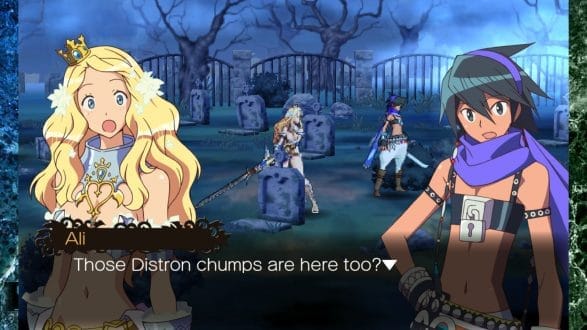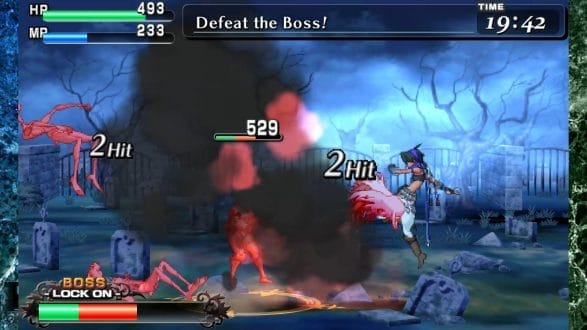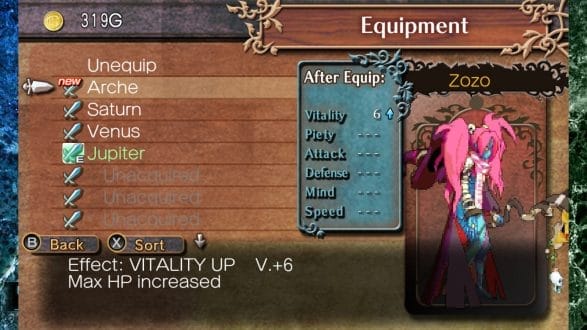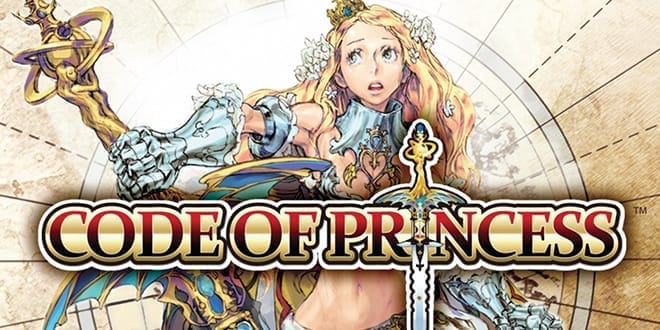It's been far too long since a game like this has made it into the hands of Western gamers, especially for those of us who self-confine to a PC gaming. A classic side-scrolling action RPG, Code of Princess puts players in the shoes of some of the most overused anime clichés, and pushes its elements of humor to the heights of ridiculousness. While the story might as well be held together with chewing gum, the quirky cast of characters keeps each scene light and amusing, their personality rounding out the fast-paced button-mashing fun of each combat session.
The PC version of Code of Princess is not the most presentable game. At first impression, it falls on its face both graphically and aesthetically. Originally a 3DS title before its Steam port, the sprites barely survive their increase in scale for larger monitors and resolutions. What might have seemed crisp and artistic on a small 3DS screen instead looks fuzzy and out of focus on PC, character sprites plagued by jagged edges which dilute the details of their features. During combat this is much less of an issue, as the battle animations are a smooth and well-choreographed joy to watch, but story scenes break from that immersion and seem dated in contrast. Even if the graphics had been better optimized for this PC port, the main character embodies the tired and irksome trope of unassuming chosen-one heroes, reduced further by her (lack of) armor in the face of mountains of looming threats to her life. A warrior princess thrust into battle, Solange does little to stand out from a vast history of fantasy character princesses that have told the same stories, the same way. At first glance, she's quite boring.

Over time, initial reactions fade to something more positive. Graphics begin to seem almost intentionally degraded, an homage to classic arcade-style side-scrollers like Streets of Rage or Dungeons & Dragons: Shadows Over Mystara. The crisp and bright artwork that accompanies the narrative reflects a certain intent when placed against the more classically styled sprites. Likewise, the over-the-top character artwork and backstory takes on a tone of parody; the roster of characters grow and add humor to the dialog, poking fun at Solange's odd choice of battle attire, breaking the fourth wall, and calling on the strength of fluffy bunnies and butterfly kisses for strength. The ways in which each character so unabashedly epitomizes a cliché changes from a weakness to a strength by poking campy fun at, rather than simply relying on, stereotypical tropes.
The story is fully voiced both in and out of battle, the personality of each character reinforced through dialog and combat shouts. Each hero is memorable and distinct, such as the very bored ambivalence of Zozo the zombie mage, or Master Drakkhen, the deceptively gentle giant. Impressively, nearly every character in the game is playable, including enemies. As characters are met and either defeated or wooed to the player's cause, they become playable in different game modes. Unfortunately, the bulk of the game's playable characters are only available in online play, with single-player stages restricted to the main adventure cast. To those who enjoy online play and leveling an assortment of characters, the game offers an obscene amount of replay value in both the co-op and competitive dueling modes, complete with leaderboards. Solo play is more than a bit of a bummer, with most playable characters locked away from the game's campaign.

Battles are both fun and visually exciting. Code of Princess uses a system of combos that are all relatively simple and easy even in the most novice of hands. Particularly powerful combos spawn traps randomly, a system which can be extremely frustrating when it breaks up the combat flow by damaging yourself as well as your enemies. Even so, these traps can also be a deadly tool when attacks are timed to coincide with their activation, sometimes setting up huge groups of enemies for devastating air combos. Occasionally, the combat controls can feel unresponsive, especially with a slight lag between the press of a button and its corresponding action. This seemed to ease up as characters gained points in their Speed stat, raising their movement speed and increasing the opportunity for juggling, but there's an element of slow-build that can make battles feel clunky and unwieldy in the beginning.
Players will spend most of their time in Code of Princess moving from one battle stage to the next. Over time, enemies become damage sponges, allowing you to rack up exciting combos and juggles, but similarly becoming far more challenging as well. Enemies also become smarter, such as ranged mages that hide behind tanks and stun the player from a distance while melee enemies raise their shields and prevent you from simply button-mashing them into oblivion. Others will seek to overwhelm with numbers, and will make full use of a stage's “rails” to surround the player. “Rails” make up a stage's multi-layered spaces, frequently composed of fore, mid and background areas that both players and enemies alike can leap between. This adds a tactical element to battle, giving players the ability to dodge incoming attacks by leaping into the background but, likewise, giving enemies the opportunity to dodge your attacks or dash to your flank. As stages progress in difficulty, even bosses will begin to realize this advantage, leaping in and out of player reach to reposition before launching their attacks.
While most of the combat revolves around quick taps of strong and weak attacks, there are two means of focusing one's power that help to take out powerful enemies before they can pose a threat. The first is a focus target button, a slow but powerful attack that locks onto a target and displays their health bar at the bottom of the screen for players to track. While locked on, said enemy will also take extra damage from attacks. The second is a kind of power up button that uses the player's magic bar, increasing damage and speed for a short time. This buff greatly heightens the impact of combat and can be maintained indefinitely using the right allocation of stats and equipment, with landed blows recharging magic faster than they can use it. When paired with a locked-target, enemies all but melt before you. Admittedly, there were times when this diminished whatever challenge the game had to offer, especially if the player took time to explore optional battle zones and level up their characters beyond what the main campaign offered.

While Code of Princess has several Multiplayer features, there were no games to be found nor players that would join self-made lobbies over the course of playing and reviewing the game. The Co-op and PvP arenas sound like they have the potential to be a lot of fun, but it's hard to tell without a larger base of players. With so much of the game's replay value being predicated on leveling the multitude of characters, it can feel as if most of the game's content relies on a perpetual community of online players, which is a lot to ask of any game let alone a niche 3DS port. With eight characters to play through campaign and free modes, a raucous cast of amusing characters and an addictive combat system, Code of Princess is still more than worth the price of admission, but the amount of content locked behind multiplayer could potentially rub players the wrong way.
Code of Princess was reviewed on PC via Steam with a code provided by the publisher.
Review Summary
Fast and thoroughly enjoyable throwback to classic side-scrolling RPGs, but too much content is hidden behind Multiplayer.
(Review Policy)Have a tip, or want to point out something we missed? Leave a Comment or e-mail us at tips@techraptor.net












